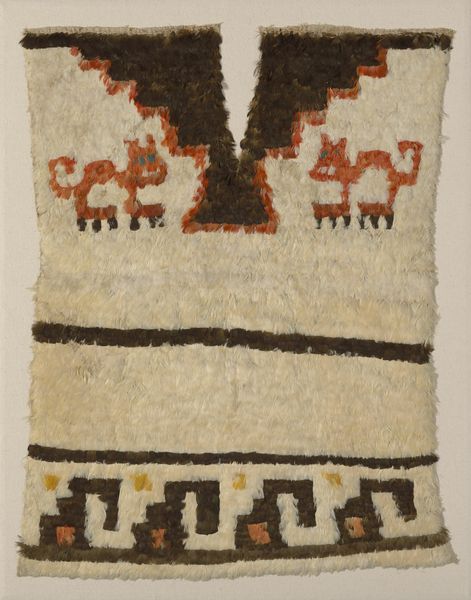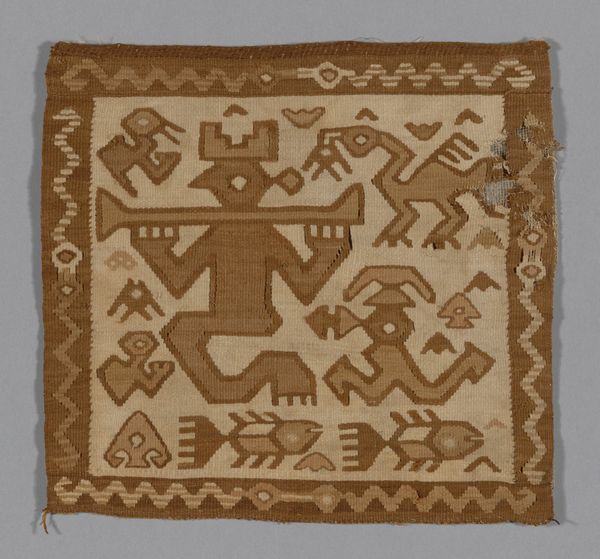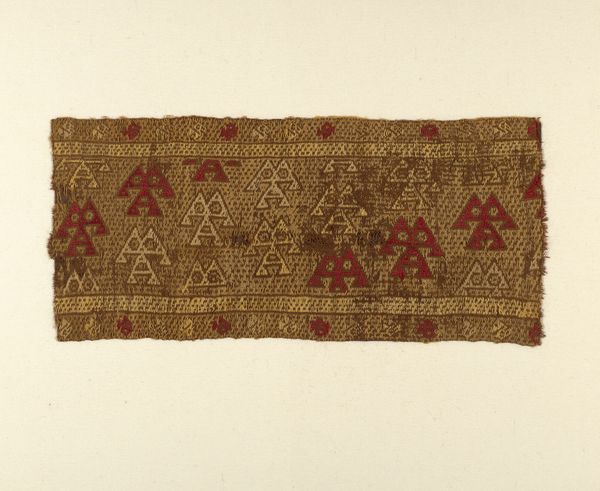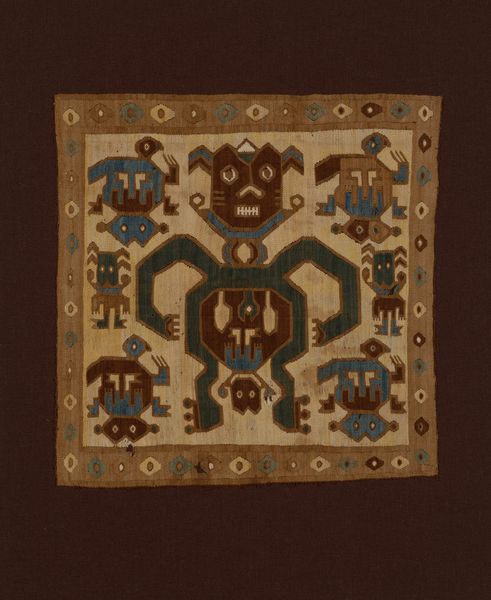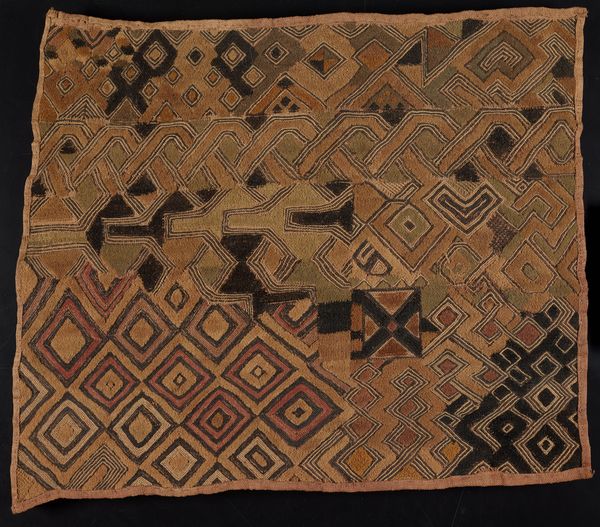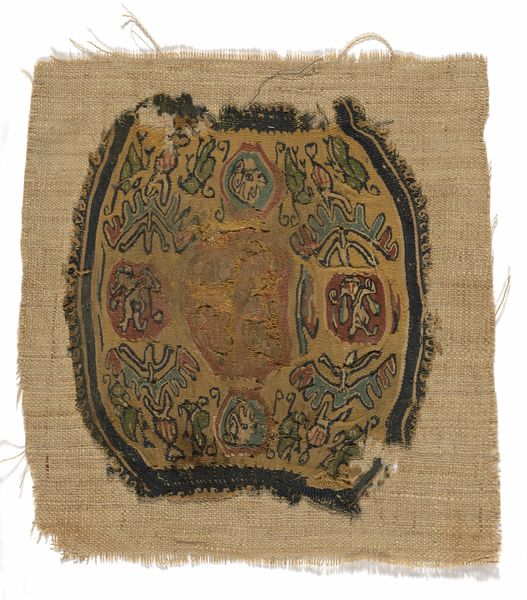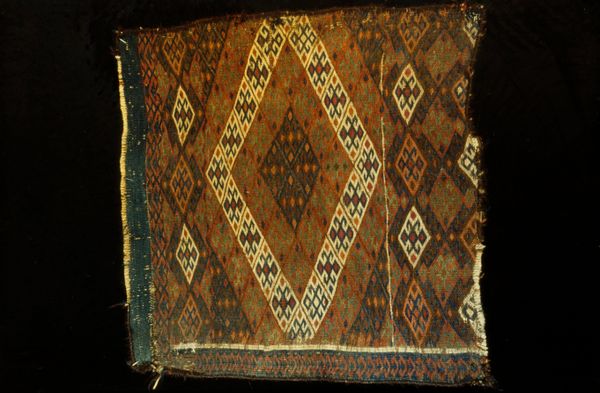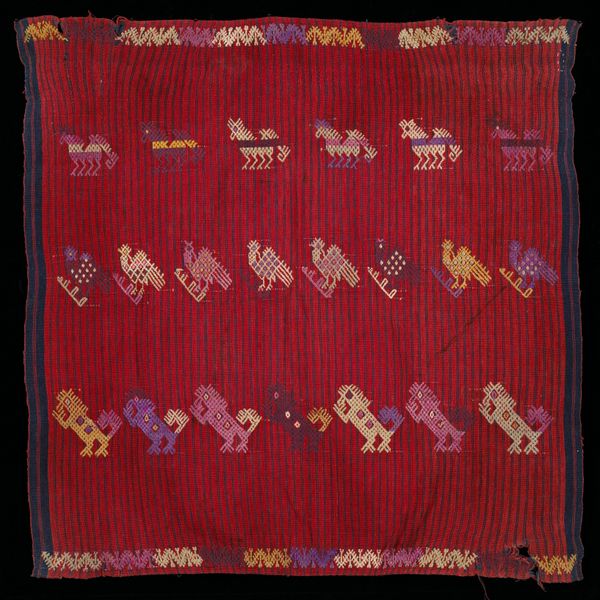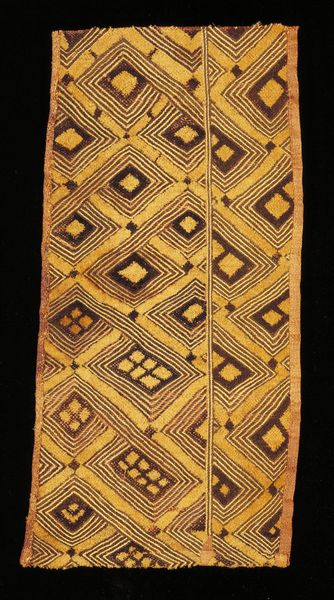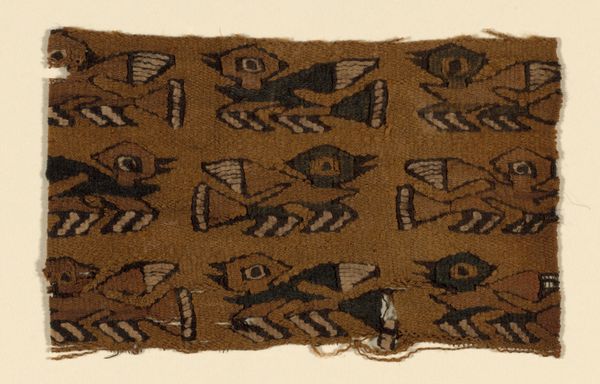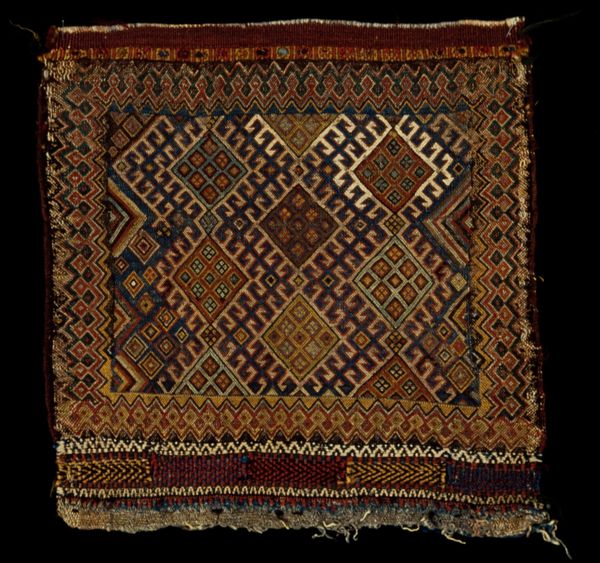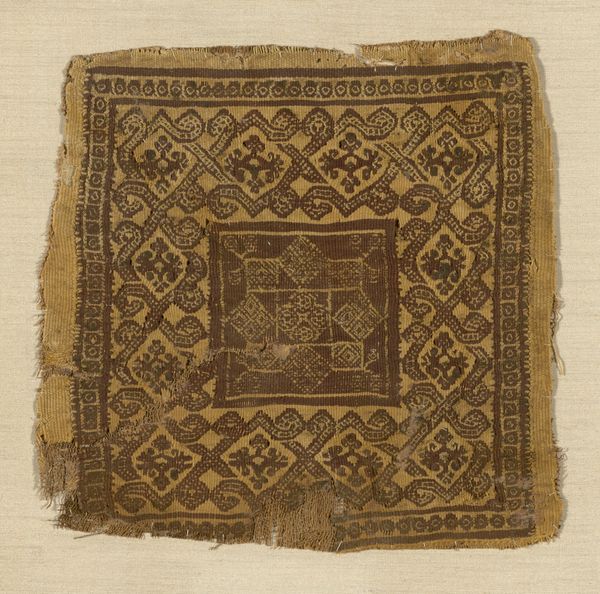
fibre-art, textile
#
fibre-art
#
textile
#
figuration
#
form
#
decorative-art
#
decorative art
#
indigenous-americas
Dimensions: 85.1 × 86 cm (33 1/2 × 33 7/8 in.)
Copyright: Public Domain
Editor: Here we have the "Feathered Tunic," crafted between 1470 and 1532 by the Chimú people. It’s a textile made with weaving. I'm struck by the flat, almost decorative quality of the figures against the cream background. How do you approach interpreting this piece through its formal qualities? Curator: Focusing on form, we observe the clear separation of space into horizontal bands. Each band presents stylized figures, primarily animals. Note how the artist uses repeated motifs of felines and birds, rendered with an emphasis on linear precision. The work achieves a visual rhythm through the arrangement of shapes, line, color, and how space is handled, wouldn't you say? Editor: Yes, the rhythm is really compelling! The limited color palette is quite striking. Was this common for textiles of this period, and how might the color choices affect the impact of the work? Curator: The colors certainly dictate much about our perception. The limited palette of primarily black, cream, with smaller accents of red, brown, blue and yellow emphasizes shape and line, lending a graphic quality to the composition. Considering the use of weaving to create geometric precision that almost hints toward pre-planned seriality, this graphic lends power to the final rendering of the work. What impact do you think the defined order has on the meaning and aesthetics of the textile? Editor: That’s insightful, particularly with your point about pre-planned seriality. For me, observing such clean design gives a voice to a narrative, the color accents contributing further meaning as important punctuations of value and meaning. I will reflect on that idea of seriality, however, as an avenue to better decode meaning. Thanks! Curator: Likewise, reflecting on your view and this dialogue, I’ll be paying more attention to decorative arts, as, like semiotics, these forms have potential value as narrative visual codifications.
Comments
No comments
Be the first to comment and join the conversation on the ultimate creative platform.
